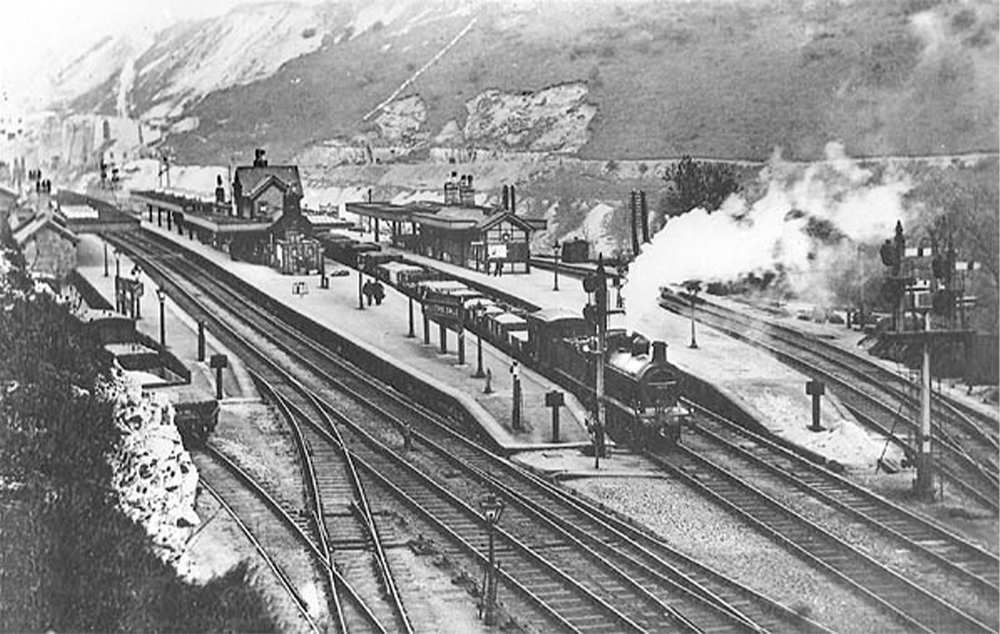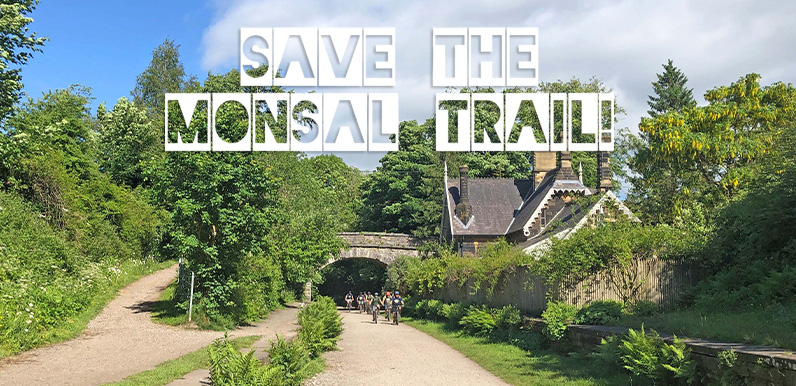Above: A group of young cyclists coming through Great Longstone Station heading towards the Buxton end of the Trail.
It was Dr Beeching’s 1963 report on the decline of Britain’s railways that sounded the death knell for many of the country’s less profitable routes, including the line known as the Peaks and Dales which ran between Miller’s Dale and Matlock.
The last train ran along the line in 1968. It then lay derelict until the Peak District National Park converted an 8.5-mile section between Bakewell and Blackwell Mill into a walking and cycling trail in 1981. But it wasn’t until the six tunnels along the route were opened in 2011 that it became so popular.
But for the last 40 years the Trail has faced calls for the railway line to be reinstated, with supporters arguing that it would both lessen traffic on the surrounding roads and reduce pollution. It would also attract more visitors to Buxton and Bakewell, generating much-needed spending in local shops, pubs, cafes and hotels.
Short but beautiful
On the other hand, the Monsal Trail is the most popular walking and cycling trail in Britain’s most popular National Park. And although it’s fairly short, it provides access to some wonderful routes across this picturesque White Peak landscape (view a selection of walks).
Supporters of the railway argue that an alternative walking and cycling route could be found. But they haven’t come up with any firm plans. And looking at a detailed map, it’s difficult to see how it could be achieved.
Another important factor is that the Peak District National Park is firmly opposed to the proposal. And it would take a lot of political will and legal action to force the Authority to relinquish ownership of the Trail.

Above: Miller’s Dale Station in 1905. This was the busiest stop on the Peaks and Dales route with five platforms connected by subways.
The 40-year history of the campaign to reinstate the railway has gone through a number of phases. It was launched by Peak Rail which runs a four-mile heritage line between Rowsley South and Matlock. They planned to extend the line from Rowsley into Buxton where they owned land next to the existing station. But they appear to have given up on the project.
In 2018, the campaign was taken over by the Manchester and East Midlands Rail Action Partnership (MEMRAP), working in partnership with the Peaks and Dales Railway. Martyn Guiver is their Director (Operations).
Up to £2 billion estimate
Martyn estimates the total cost to reinstate the line at between £1.2bn and £2bn, with a pay-back period of some 60 years, and says they have secured funding from three sources. I asked about the next stage in the process:
“Our primary focus is to try to complete the outline feasibility study by the end of 2024. That requires the indicative timetable, various infrastructure indicative costs, additional MP support and elements of the trails plan.
“Beyond that depends on whether Labour sticks to the indicated policies of third party investment for infrastructure programmes and also simplification of planning. The presentation of the business case would commence as soon as the feasibility study completed.”
Online petitions
Both the campaign to reinstate the line, and those who want to retain it, have their own on-line petitions and it’s interesting to compare the two.
Save Our Monsal Trail’s petition currently has over 15,000 supporters. But the Peaks and Dales Railway’s petition to reinstate the line has over 20,000. Click below to view – and possibly add your support – to either petition.


I walked both the Monsall Trail and some parallel trails along the river or over the tunnels, and I might add that this attraction led me to spend a week in the Buxton area. I would find it catastrophic if the Monsal Trail reverted to an operating railway shut off from the public with ridiculous fines for trespassing. On the other hand we would rather have public trails beside the operating railways from Blackwell Mill both to Buxton and through Great Rocks Dale.